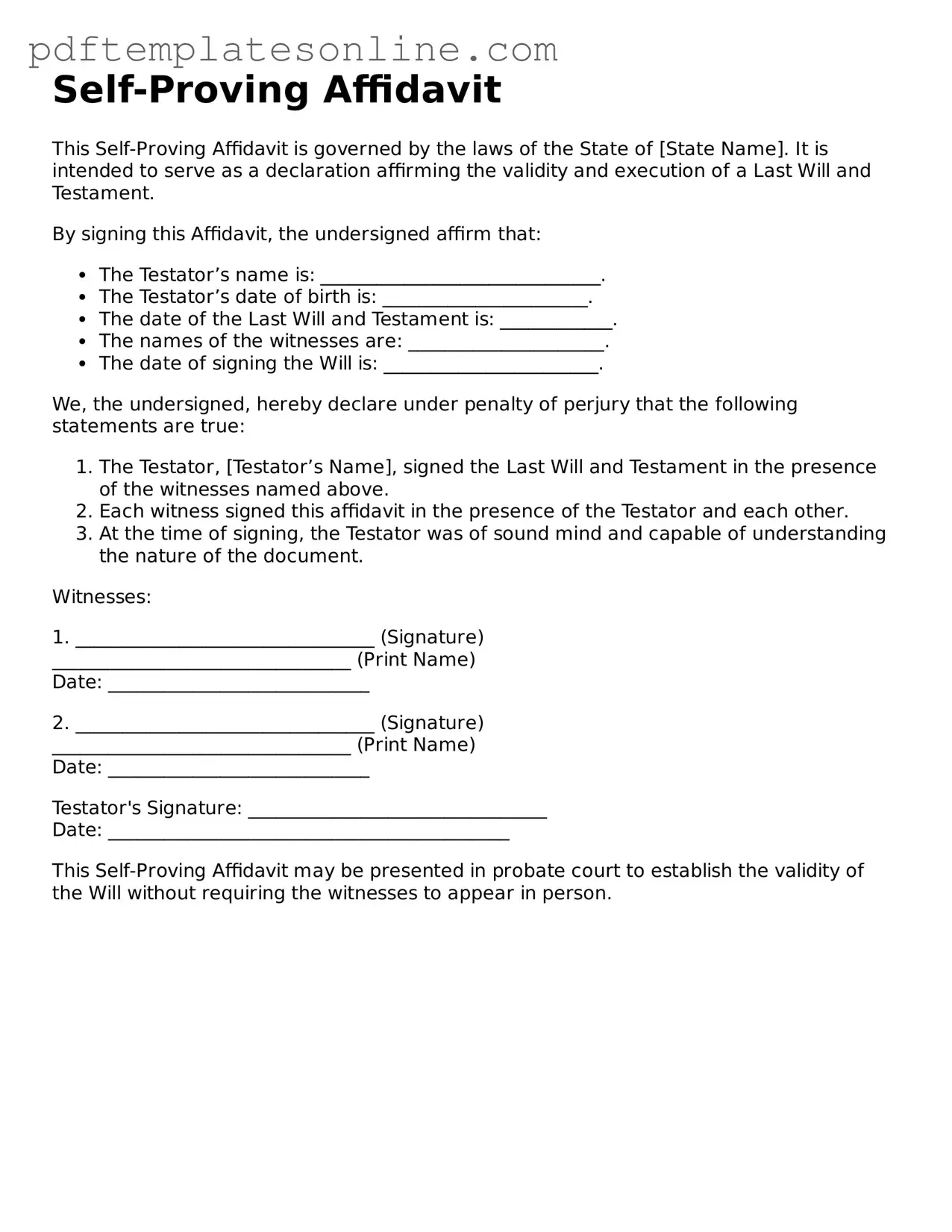Filling out a Self-Proving Affidavit form is a crucial step in the estate planning process. However, individuals often make several common mistakes that can lead to complications later on. One frequent error is failing to ensure that all required information is provided. Each section of the form typically requires specific details, such as the names and addresses of witnesses. Omitting any of this information can render the affidavit invalid.
Another common mistake involves not having the affidavit signed in the presence of witnesses. Many people underestimate the importance of this requirement. The law generally mandates that the affidavit be executed in front of at least two witnesses who can attest to the testator's signature. If this step is overlooked, the document may not hold up in court.
Individuals sometimes forget to include the date of signing on the affidavit. This date serves as a critical point of reference for validating the document. Without it, questions may arise regarding the timing of the will's execution, potentially leading to disputes among heirs.
Additionally, some people fail to properly identify the testator. The affidavit should clearly state the full name of the individual making the will. Any ambiguity in this section can create confusion and complicate the probate process, especially if there are multiple individuals with similar names.
Another mistake involves using outdated forms. Legal documents can change over time, and using an old version of the Self-Proving Affidavit can lead to issues. It is essential to obtain the most current form to ensure compliance with state laws.
Moreover, individuals often neglect to read the entire affidavit before signing. Skimming through the document can lead to misunderstandings about its content and implications. It is vital to understand what one is signing to avoid potential legal challenges in the future.
Lastly, some individuals fail to keep copies of the completed affidavit. After signing, it is important to retain a copy for personal records and to provide copies to the witnesses. Without these records, proving the validity of the affidavit may become problematic if disputes arise later.
